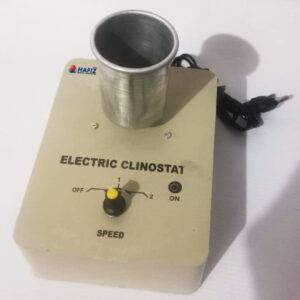Description
🔧 Product Description: HALF WAVE RECTIFIER
A Half Wave Rectifier is an essential electronic component used to convert alternating current (AC) into direct current (DC). It works by allowing only one half-cycle (positive or negative) of the AC signal to pass through, effectively blocking the other half. This process results in a pulsating DC output which is useful in many low-power applications and foundational learning in electronics.
This rectifier typically consists of a single diode and a load resistor. During the positive half-cycle of AC input, the diode becomes forward-biased and conducts, allowing current to flow through the load. This basic principle makes it a perfect component for understanding the fundamentals of rectification and semiconductor behavior.
In laboratories, half wave rectifiers are widely used in physics and electrical engineering experiments. Students use it to understand waveform transformation, diode characteristics, and the rectification process.
📦 Features:
-
Simple and low-cost design
-
Demonstrates basic AC to DC conversion
-
Ideal for educational and experimental use
-
Supports learning of diode behavior and current flow
-
Easy integration with basic circuit setups
📘 Applications:
-
Educational electronics kits
-
Basic power supplies
-
Signal demodulation
-
Battery charging circuits (low-power)
-
Learning and training modules in physics and electrical labs
🧪 Working Principle:
When the AC voltage becomes positive, the diode conducts and allows the current to pass.
-
Input Voltage: Varies based on transformer
-
Output Voltage: Pulsating DC
-
Efficiency: Around 40.6%
-
Ripple Factor: 1.21 (relatively high)
-
Components Required: 1 x PN junction diode, 1 x load resistor
❓ Frequently Asked Questions (FAQs)
Q1: What is the function of a Half Wave Rectifier?
A: It converts alternating current (AC) into pulsating direct current (DC) by allowing only one half of the AC waveform to pass through.
Q4: How does a Half Wave Rectifier differ from a ?
A: A only uses one half of the AC cycle, while a uses both halves, making it more efficient.
Q5: What is the output of a HWR?
A: The output is a pulsating DC voltage with a relatively high ripple.
Q6: Why is it important in physics experiments?
A: It helps students understand fundamental concepts of electricity, rectification, and semiconductor physics.
Q7: What is the efficiency of a Half Wave Rectifier?
A: Its efficiency is approximately 40.6%, which is lower compared to other rectifier types.
Q8: Can a Half Wave Rectifier power a DC device directly?
A: Only in very low-power applications.
Q9: What are the limitations of a Half Wave Rectifier?
A: Low efficiency, high ripple content, and poor voltage regulation.
Q10: How can the performance of a be improved?
A: Adding a filter capacitor can help smooth the output and reduce ripple.





Reviews
There are no reviews yet.